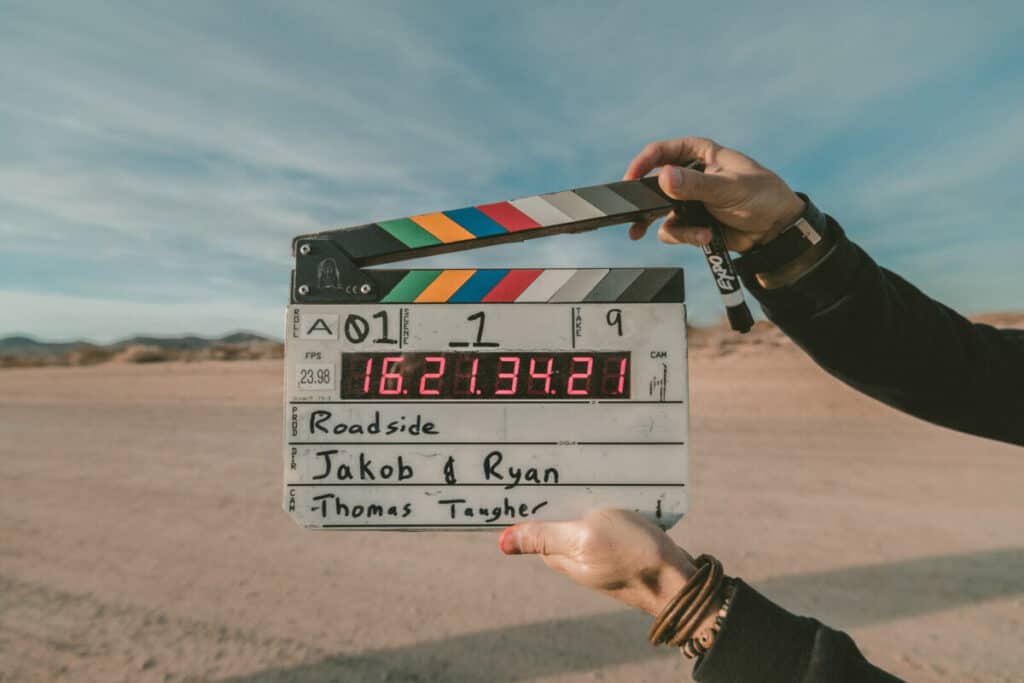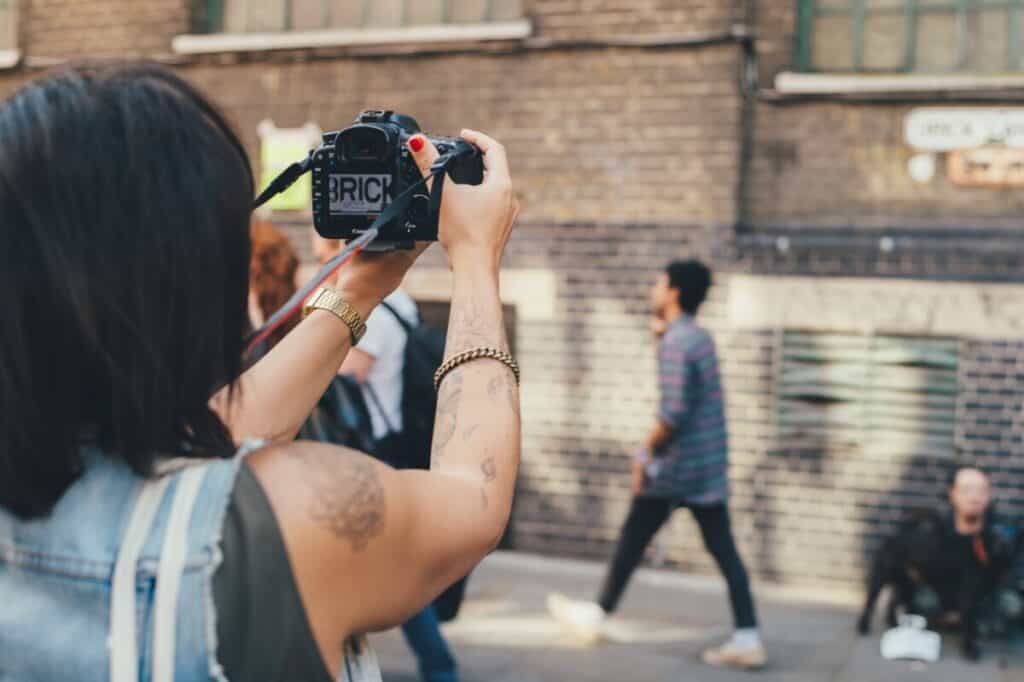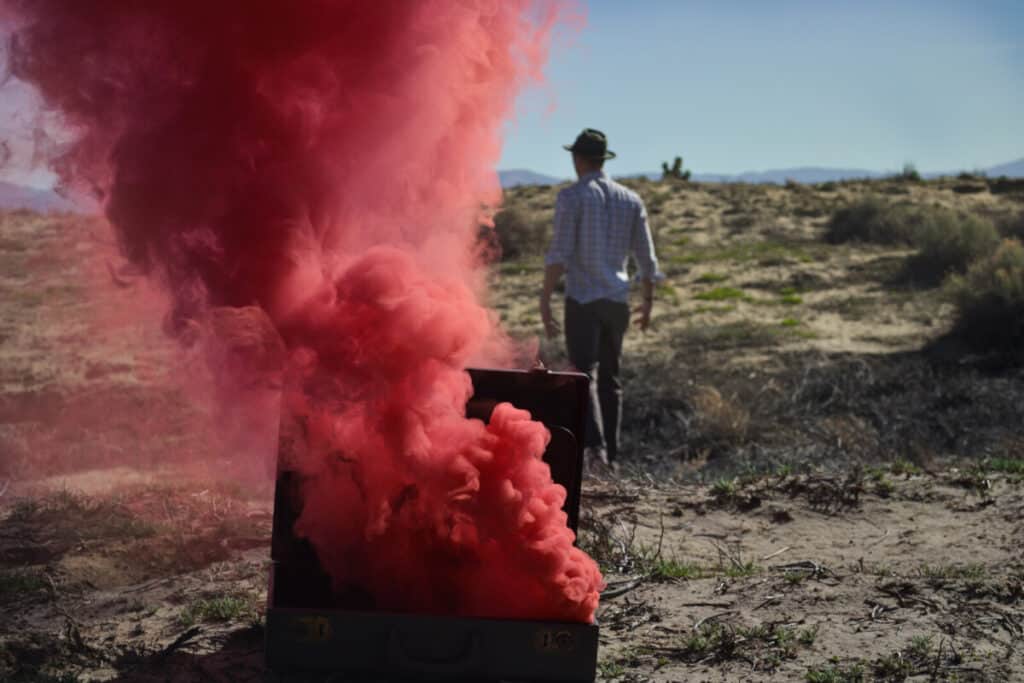
So, you may ask, what sets the types of music videos apart,? What are the distinct styles, concepts, and approaches that musicians can employ to breathe life into their artistic visions? These questions fuel our exploration as we delve into a world where creativity knows no bounds.
In this article, we aim to enlighten and inspire artists like yourself to embrace the limitless possibilities of music video production. Whether you’re a solo musician, a band, or a burgeoning artist, understanding the various types of music videos can provide a wellspring of ideas and a fresh perspective for your own visual creations.
So that brings us to the very question we are here to answer: What are the different Types of music videos that an artists can create?
There are several common types, including performance-based music videos, narrative and storytelling videos, conceptual and experimental videos, animated and visual effects-driven videos, and location-based and cinematic videos.
We’ll unravel the intricacies and nuances of the different types of music videos, providing examples, tips, and insights to inspire artists in their video-making endeavors. Stay tuned to discover the wide range of possibilities and unleash your creativity in the world of music videos. Along the way, we’ll provide valuable insights, practical tips, and creative suggestions to help you bring your unique vision to life.
Now, grab your instrument, charge your cameras, and follow along as we unravel everything about the Different Types of Music Videos You Can Make.
Performance-Based Music Videos
Definition and overview of performance-based music videos:
Performance-based music videos are a popular genre that focuses on capturing the essence and energy of a live musical performance. In these videos, the artist or band takes center stage, showcasing their musical talent, charisma, and stage presence. The primary focus is on delivering an engaging visual representation of the music through dynamic performances.
Examples of performance-based music videos from well-known artists:
- “Thriller” by Michael Jackson: This iconic music video features a captivating performance by Michael Jackson, complete with choreographed dance moves and theatrical storytelling. It set a new standard for performance-based music videos and remains a timeless classic.
- “Single Ladies (Put a Ring on It)” by Beyoncé: Beyoncé’s electrifying performance in this video mesmerized audiences worldwide. With its powerful choreography and minimalist aesthetic, it exemplifies the impact of a strong performance in capturing attention.
Benefits and considerations of creating this type of music video:
Performance-based music videos offer several advantages. They allow artists to showcase their stage presence, connect with their audience on a deeper level, and visually enhance their music. These videos can also serve as powerful promotional tools, showcasing an artist’s live performance abilities and attracting new fans.
However, it’s important to consider the balance between a visually appealing performance and engaging storytelling. While a captivating performance is crucial, finding ways to incorporate narrative elements or creative visual techniques can elevate the video and make it more memorable.
Here is a great article that details a checklist of things you need to have together in order to make a great Music Video. We thought the information could be Useful. Have a read!
Tips and techniques for capturing compelling live performances:
- Energize the stage: Channel your inner showmanship and bring your charisma to the forefront. Engage with the camera, exude confidence, and let your passion shine through your performance.
- Utilize dynamic camera movements: Experiment with camera angles, close-ups, and sweeping shots to capture the energy and intensity of your performance. Smooth tracking shots and quick cuts can add visual flair and enhance the viewer’s experience.
- Consider lighting and set design: Create a visually appealing stage setup that complements your music and performance style. Play with different lighting techniques, color schemes, and props to enhance the atmosphere and convey the desired mood.
- Experiment with editing techniques: Use editing techniques such as quick cuts, slow motion, or split screens to add visual interest and amplify the impact of your performance. Don’t be afraid to get creative and explore different styles that align with your music.
- Collaborate with a skilled videographer: Working with a professional videographer experienced in capturing live performances can significantly enhance the quality and production value of your video. Their expertise can ensure that your performance is captured in the best possible way.
Performance-based music videos offer a platform for artists to showcase their musical talent and stage presence. By harnessing the power of captivating performances, dynamic camera work, and creative editing, artists can create visually compelling videos that resonate with their audience.
Before you start shooting your own videos; There are certain specific pieces of gear you’ll need to effectively do the job. Here is a guide to what that gear is. Check it out!
Narrative and Storytelling Music Videos

Definition and overview of narrative and storytelling music videos:
Narrative and storytelling music videos go beyond showcasing a performance and delve into the realm of storytelling. These videos utilize visual elements, characters, and plotlines to convey a narrative that enhances the music and captivates the audience. They offer a unique opportunity for artists to bring their songs to life through compelling storytelling.
Examples of narrative music videos that effectively tell a story:
- “Hurt” by Johnny Cash: This music video tells a poignant story through a combination of powerful imagery and Johnny Cash’s heartfelt performance. The narrative explores themes of aging, reflection, and redemption, leaving a lasting impact on viewers.
- “Take On Me” by A-ha: Known for its iconic animation and narrative-driven storyline, this music video takes viewers on an imaginative journey where a comic book character comes to life. The visual storytelling adds depth and excitement to the song, making it memorable.
Exploring different storytelling approaches and concepts in music videos:
- Conceptual narratives: These videos often feature symbolic or metaphorical storytelling, where the visuals represent deeper meanings and emotions. By employing abstract or surrealistic elements, artists can evoke a range of emotions and engage viewers on an intellectual level.
- Linear narratives: This approach follows a traditional storytelling structure, unfolding a clear plotline with a beginning, middle, and end. It allows for a cohesive and easily understandable narrative, providing a satisfying experience for the audience.
- Non-linear narratives: These videos employ a fragmented storytelling style, presenting scenes out of chronological order or utilizing flashbacks. This approach adds intrigue and keeps viewers engaged as they piece together the narrative puzzle.
Tips for planning, scriptwriting, and directing narrative music videos:
- Start with a concept: Brainstorm ideas that complement the song’s themes or lyrics. Consider the emotions you want to evoke and the message you wish to convey. Develop a strong concept that aligns with the music and resonates with your audience.
- Craft a script: Create a script that outlines the narrative structure, character development, and key visual moments. Pay attention to pacing, dialogue (if any), and transitions between scenes. Ensure the script complements the music and enhances its impact.
- Visualize the story: Storyboarding and shot planning are crucial in bringing your narrative to life. Determine the camera angles, framing, and composition that best convey the emotions and progress the story. Collaborate with a skilled cinematographer to capture the visuals effectively.
- Casting and performance: Select actors or performers who can embody the characters and bring depth to the narrative. Communicate your vision clearly and provide guidance during rehearsals and on-set to capture compelling performances that enhance the story.
- Post-production finesse: Edit the footage, paying attention to pacing, transitions, and the overall flow of the story. Consider color grading, sound design, and visual effects to enhance the narrative and create a cohesive visual experience.
Narrative and storytelling music videos offer a platform for artists to transport their audience into captivating worlds and evoke powerful emotions. By exploring various storytelling approaches, crafting compelling scripts, and paying attention to visual details, artists can create music videos that resonate deeply with viewers.
When you go through all of the work of making a music video; You certainly don’t want to make one that isn’t “good”. We recently posted an article that dispels the mystery of doing that. For help in conceiving and creating a “good” music video; Read Here!
Conceptual and Experimental Music Videos
Definition and overview of conceptual and experimental music videos:
Conceptual and experimental music videos push the boundaries of traditional storytelling and embrace unconventional approaches to create visually striking and conceptually rich experiences. These videos often prioritize artistic expression, symbolism, and abstract visuals over linear narratives, challenging viewers’ perceptions and inviting them into a realm of imagination.
Examples of artists who have pushed the boundaries with their experimental videos:
- Björk: Known for her innovative music videos, Björk combines avant-garde aesthetics, surreal imagery, and unconventional storytelling in her visual works. From “Human Behaviour” to “All is Full of Love,” her videos experiment with abstract concepts and visual metaphors, creating mesmerizing and thought-provoking experiences.
- Radiohead: The band has consistently embraced experimentation in their music videos. Examples like “Paranoid Android” and “Knives Out” showcase their willingness to challenge conventions, incorporating surreal imagery, disjointed narratives, and unexpected visual elements to enhance the emotional impact of their music.
Exploring abstract and unconventional approaches in music videos:
- Symbolism and metaphor: Utilize symbols and metaphors to convey deeper meanings and evoke emotions. Abstract visuals and non-literal representations can spark viewers’ interpretations, allowing them to connect with the music on a personal and imaginative level.
- Non-linear narratives: Break free from traditional linear storytelling by experimenting with fragmented narratives or juxtaposed scenes. Disrupting the conventional narrative structure can engage viewers and invite them to actively interpret and piece together the story.
- Visual effects and editing techniques: Embrace innovative visual effects, such as glitch art, kaleidoscopic patterns, or time manipulation, to create captivating and visually stimulating experiences. Experiment with editing techniques like jump cuts, overlays, or unconventional transitions to enhance the visual impact.
Techniques and tools for creating visually striking and conceptually rich videos:
- Visual storytelling: Focus on the synergy between visuals and music to create a cohesive and immersive experience. Plan and storyboard the progression of visuals, ensuring they complement the music and convey the desired emotions or concepts.
- Cinematography and lighting: Experiment with different camera angles, perspectives, and lighting techniques to create mood and atmosphere. Play with shadows, reflections, or unconventional framing to enhance the visual impact and evoke specific emotions.
- Collaboration and experimentation: Collaborate with visual artists, filmmakers, or animators to bring unique perspectives and skills to the project. Embrace experimentation by trying out new techniques, tools, or visual mediums that align with your artistic vision.
- Post-production creativity: Use editing software and visual effects tools to enhance the concept and aesthetics of your video. Explore color grading, compositing, or animation to add layers of depth and visual interest.
Conceptual and experimental music videos offer a platform for artists to defy norms, explore abstract concepts, and push the boundaries of visual storytelling. By embracing symbolism, non-linear narratives, and innovative visual techniques, musicians can create visually striking and conceptually rich videos that leave a lasting impact on viewers.
Animated and Visual Effects-Driven Music Videos

Definition and overview of animated and visual effects-driven music videos:
Animated and visual effects-driven music video types utilize the power of animation and visual effects to bring music to life in unique and captivating ways. These videos employ various animation techniques, including 2D, 3D, stop motion, and mixed media, to create immersive worlds and visually stunning narratives. Visual effects add an extra layer of magic and enhance the overall visual experience, pushing the boundaries of what is possible in a music video.
If you’d like to get some up and coming visual artist to help you build something on a budget don’t forget to check out Fiverr. We don’t receive any kickback for the referral. It is just a good resource for something like this.
Examples of music videos that heavily utilize animation and visual effects:
- Gorillaz: This virtual band has become renowned for their animated music videos. From the iconic “Clint Eastwood” to the visually stunning “Feel Good Inc.,” Gorillaz seamlessly blends animation and music, creating immersive and imaginative worlds inhabited by their virtual band members.
- Daft Punk: Known for their visually striking music videos, Daft Punk often incorporates animation and visual effects into their work. Videos like “One More Time” and “Around the World” showcase their ability to create mesmerizing visuals that complement their electronic soundscapes.
Exploring different animation styles and visual effects techniques:
- 2D animation: This classic animation style uses hand-drawn or digitally created characters and environments. It offers a wide range of artistic possibilities, from traditional cel animation to more modern techniques like motion graphics.
- 3D animation: Utilizing computer-generated imagery, 3D animation adds depth and realism to music videos. It allows for intricate character and object animations, realistic lighting, and complex visual effects.
- Stop motion animation: This technique involves manipulating physical objects or puppets frame by frame to create the illusion of movement. Stop motion adds a tactile and unique charm to music videos and offers a distinct visual aesthetic.
- Visual effects: Visual effects encompass a wide range of techniques, including compositing, motion tracking, and particle simulations. They can be used to create otherworldly environments, surreal transformations, and fantastical elements that enhance the visual impact of a music video.
Resources and software recommendations for creating animated music videos:
- Adobe After Effects: A versatile software widely used for creating visual effects and motion graphics. It offers a range of tools and features to bring animations and visual effects to life.
- Toon Boom Harmony: A professional animation software known for its robust capabilities in 2D animation. It provides a comprehensive set of tools for creating smooth and expressive animations.
- Blender: A free and open-source 3D animation software that offers a wide range of features, including modeling, rigging, and rendering. It is a powerful tool for creating complex 3D animations.
- Dragonframe: A popular software for stop motion animation that offers precise control over camera movements, frame capturing, and onion skinning.
- Unity: While primarily a game development engine, Unity can also be used to create interactive and immersive music videos. It allows for real-time rendering, dynamic lighting, and interactive elements.
Animated and visual effects-driven music videos provide a canvas for artists to unleash their creativity. Whether through 2D, 3D, stop motion, or a combination of techniques, these videos can push the boundaries of visual storytelling.
After all of this and before we end; We thought it best to remind you that the main goal of all of this is not just to survive as an independent Artist, but to thrive! If you need some insight in steps to take to see that into being. This guide will help. Bookmark and Save!
In Conclusion
Throughout this article, we have introduced the diverse world of music videos, exploring various types and creative approaches. Music videos hold immense potential for artists to express their creativity, captivate audiences, and leave a lasting impact.
As we conclude, let’s emphasize the importance of embracing creativity and daring to experiment. Don’t be afraid to push boundaries, challenge conventions, and discover your unique visual style. Each music video you create is an opportunity to explore new challenge yourself as an artist.
Remember, music videos and all of their types are not just about visuals but also about forging a deeper connection with your audience. Through storytelling, performance, animation, or cinematic techniques, you can engage viewers on an emotional level and leave a lasting impression.
So, let your imagination run wild, and never shy away from trying new ideas. Your creativity should know no bounds.
Now, armed with insight and inspiration, it’s time to get out there and see what you can do. Take the leap, trust your vision, and shine brightly.
